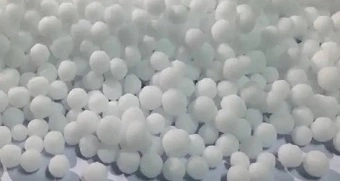Ethyleneurea: From Industrial Processes to Agricultural Enhancements
14 Oct 2024 • by Natalie Aster

Ethyleneurea (aka 2-imidazolidone) is a cyclic urea derivative that has become indispensable for various industrial and agricultural applications for its ability to improve the performance of materials it is applied to. Structurally, it contains a nitrogen-carbon backbone that allows it to engage in hydrogen bonding, giving it its chemical versatility. This compound is soluble in water and other polar solvents, making it useful in a wide range of chemical processes.
Its chemical stability and low toxicity make ethyleneurea a sought-after compound in both industrial and agricultural settings. In particular, it has become popular in areas where sustainable solutions and eco-friendly alternatives are in demand.
Ethyleneurea in Industrial Applications
Textile Industry
Ethyleneurea is commonly employed as a finishing agent. Its primary function is to reduce shrinkage in fabrics and improve the overall durability of the material. When applied to cotton, for example, ethyleneurea enhances the fabric's wrinkle resistance and allows it to maintain a smooth appearance even after multiple washings.
Ethyleneurea's ability to form cross-links between fibers has made it an essential compound in textile production. The application of ethyleneurea-based resins helps improve the lifespan of textiles, thus contributing to sustainable fashion practices by reducing fabric waste. Furthermore, these resins create a more breathable fabric, offering additional comfort to end-users.
Paper Industry
Ethyleneurea is vital in the manufacture of specialty papers such as those designed for printing or packaging. It is added to enhance the strength and smoothness of the paper, allowing it to withstand wear and tear during processing and use.
By facilitating the creation of smoother surfaces, ethyleneurea improves ink absorption in printing applications. This leads to sharper and more vibrant images on paper, which is critical in the production of high-quality prints. Additionally, the use of ethyleneurea can improve the water-resistance of certain papers, which is essential for packaging applications.
Coatings & Adhesives
Due to its reactivity with formaldehyde, ethyleneurea has been used in various formaldehyde-free coatings and adhesives that are more eco-friendly than traditional options. These products offer excellent adhesion properties, especially on surfaces like wood, glass, and metal.
Moreover, in the coatings industry, ethyleneurea is valued for its anti-corrosive properties, which extend the lifespan of metal structures exposed to moisture or harsh environments. Its use in protective coatings makes it a valuable component in the construction and automotive industries.
Ethyleneurea in Agriculture
Controlled-Release Fertilizer
One of the most promising applications of ethyleneurea in agriculture is its role in controlled-release fertilizers (CRFs). These fertilizers are designed to release nutrients over time, ensuring that plants receive the necessary nutrients in a consistent and sustainable manner.
Ethyleneurea-based CRFs improve nutrient uptake efficiency by preventing leaching and volatilization of fertilizers. By controlling the release of nitrogen, phosphorus, and potassium, these fertilizers minimize nutrient loss, leading to better crop yields while also being environmentally conscious.
Plant Growth Regulation
Ethyleneurea is increasingly being explored as a plant growth regulator. By influencing cell division and expansion, it can affect plant growth patterns, potentially leading to more efficient farming practices. This compound shows promise in improving crop resistance to stress conditions, such as drought or poor soil quality.
Research has shown that ethyleneurea can enhance photosynthesis rates and water use efficiency in certain plants. These effects make it a potential tool for improving the productivity of crops in arid regions or areas facing climate change-related challenges.
Final Thoughts
With increasing global demand for sustainable and green technologies, ethyleneurea’s ability to improve the performance of various materials without adding significant environmental burden makes it a compound with tremendous future potential. As industries move toward more eco-conscious practices, ethyleneurea will continue to play a crucial role in driving innovation and improving efficiency.
Product Details:
Global Ethyleneurea Market Research Report 2024(Status and Outlook)
Published: September 2024
Pages: 120
Market Publishers boasts a rich collection of insightful research studies covering the chemicals and petrochemicals market, find it in the Chemicals & Petrochemicals Market Reports Catalogue.
CONTACTS
The Market Publishers, Ltd.
Natalie Aster
Tel: +44 208 144 6009
Fax: +44 207 900 3970
[email protected]
MarketPublishers.com
Analytics & News
